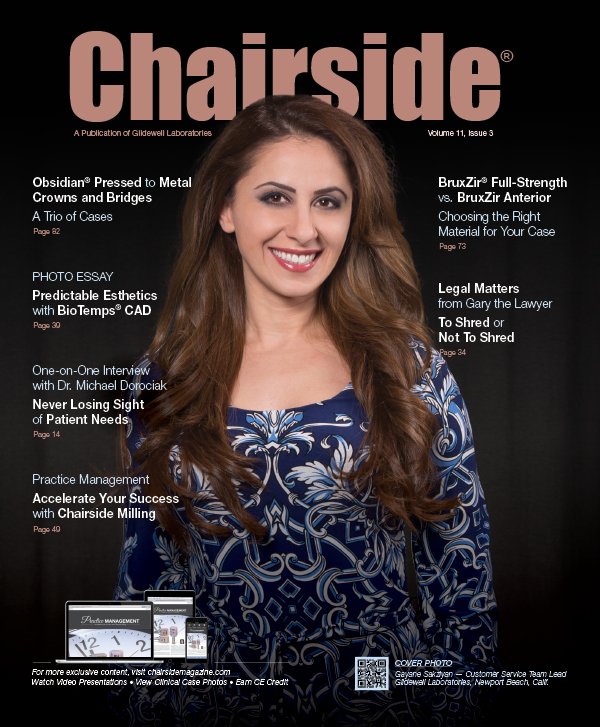Obsidian® Fused to Metal Crowns and Bridges: A Trio of Cases
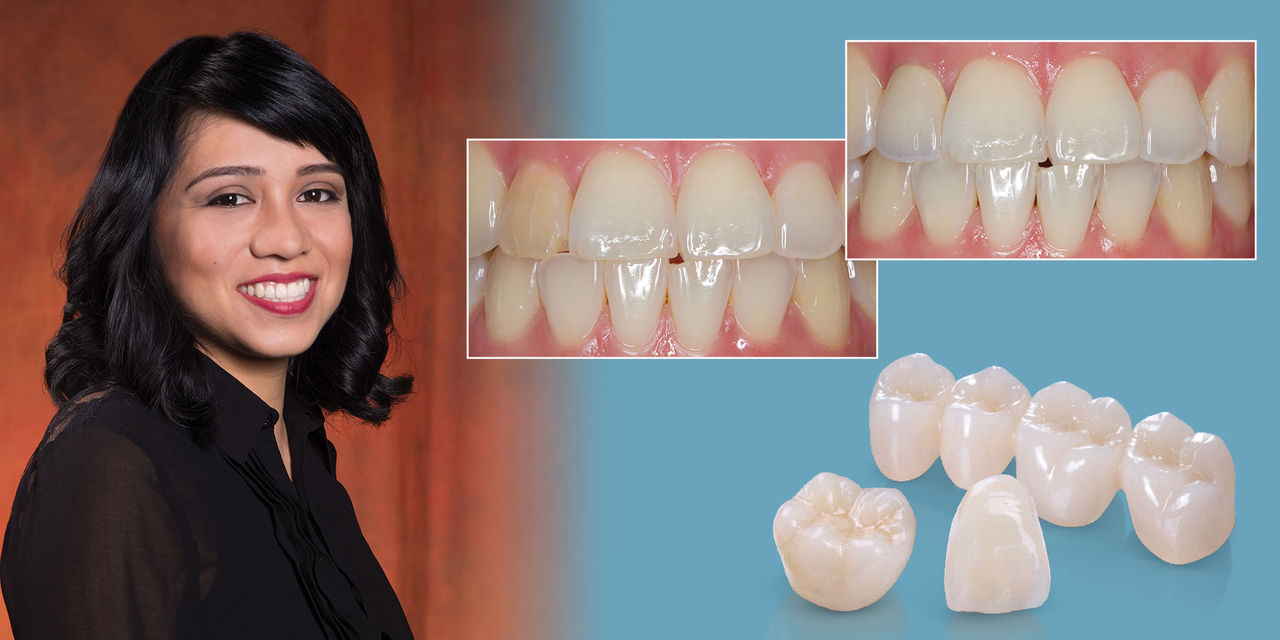
Glidewell Laboratories recently launched a new type of restoration that builds upon the trusted industry-standard porcelain fused to metal crown. Obsidian® Fused to Metal is a modern update of the time-tested technology, replacing feldspathic porcelain with biocompatible, durable lithium silicate and swapping out cast copings for substructures shaped and laser-sintered by robotic processes.
These natural-looking, state-of-the-art restorations are indicated for any clinical situation that might receive a traditional PFM, including: bridge cases that lack the vertical height necessary for adequate zirconia connectors; cases where the restoration must match proximal PFMs; and restoration of endodontically treated teeth with crown or root staining that would bleed dark shadows through all-ceramic restorations.
The following three cases demonstrate the versatility of this new restoration.
Case 1: A Discolored Lateral Incisor
A patient presented with a right lateral incisor that exhibited discoloration extending into the dentin (Figs. 1a, 1b); the color did not match the healthy adjacent central (Fig. 2). After initial examination, a combination of in-office internal bleaching and a three-week take-home bleaching regimen was prescribed to restore the dentin to an esthetic shade (Fig. 3).
When the patient returned after three weeks, restoration of tooth #7 could begin. Because the tooth was in the esthetic zone, this case required a restorative material that is translucent yet able to hide the underlying dentin. Obsidian Fused to Metal, which accomplishes those requirements, was selected for this case.
Initial retraction of about 0.5 mm was achieved with a single Ultrapak® #00 cord (Ultradent Products, Inc.; South Jordan, Utah). The now-exposed gingival margin was troughed with a spherical 801-021 bur (Axis Dental; Coppell, Texas), and then depth cuts were placed in the incisal and facial edges (Fig. 4). The remaining reduction was accomplished with an 856-025 bur (Axis Dental) simply by reducing to the now-established measurements. Then, an Ultrapak #2 cord was seated to retract the tissue laterally (Fig. 5), increasing the ability for the impression material to flow into the margin. A conventional vinyl polysiloxane (VPS) impression was taken, and then a BioTemps® provisional crown was used for temporization.
The patient returned approximately one week later for delivery of the final prosthesis. The Obsidian Fused to Metal crown was tried in to evaluate fit (Fig. 6). The restoration was then seated with Ceramir® Crown & Bridge cement (Doxa Dental; Newport Beach, Calif.), with the excess cement removed from the gingival tissue as well as from the interproximal spaces (Fig. 7).
The restoration achieved an esthetic result that matched the adjacent dentition and exhibited translucency similar to natural dentition (Fig. 8). Obsidian Fused to Metal restorations are an ideal choice when the underlying preparation prohibits the use of a high-esthetic all-ceramic, as well as in cases that require fracture-resistant durability.

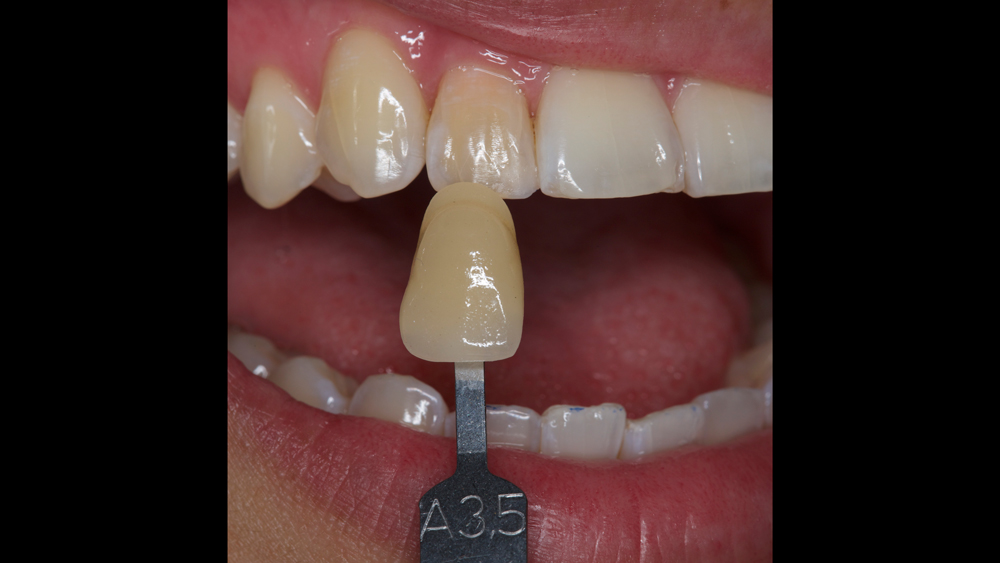
Figures 1a, 1b: The preoperative condition. Note the difference in shade between tooth #7 and #8.
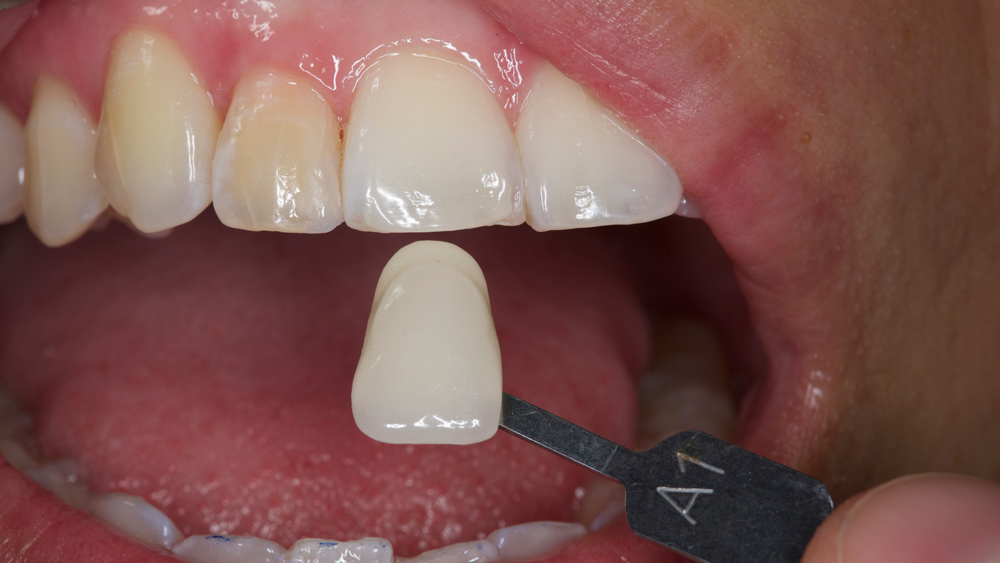
Figure 2: The adjacent central was several shades lighter than the lateral.
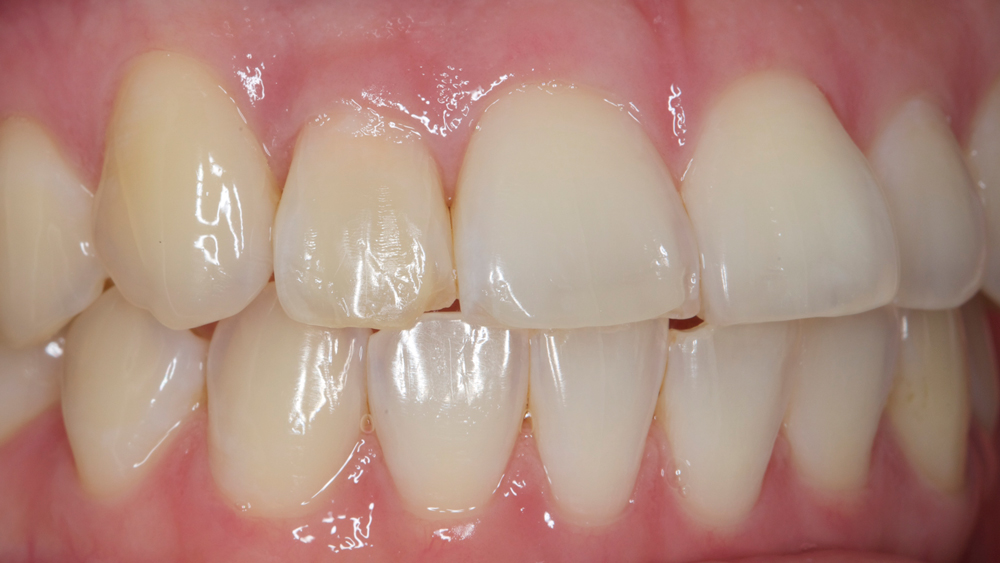
Figure 3: The preoperative condition after in-office internal bleaching and three weeks of at-home patient bleaching.

Figure 4: Depth cuts were placed to ensure the preparation was reduced to the material’s required dimensions.

Figure 5: The completed preparation with the second cord in place.
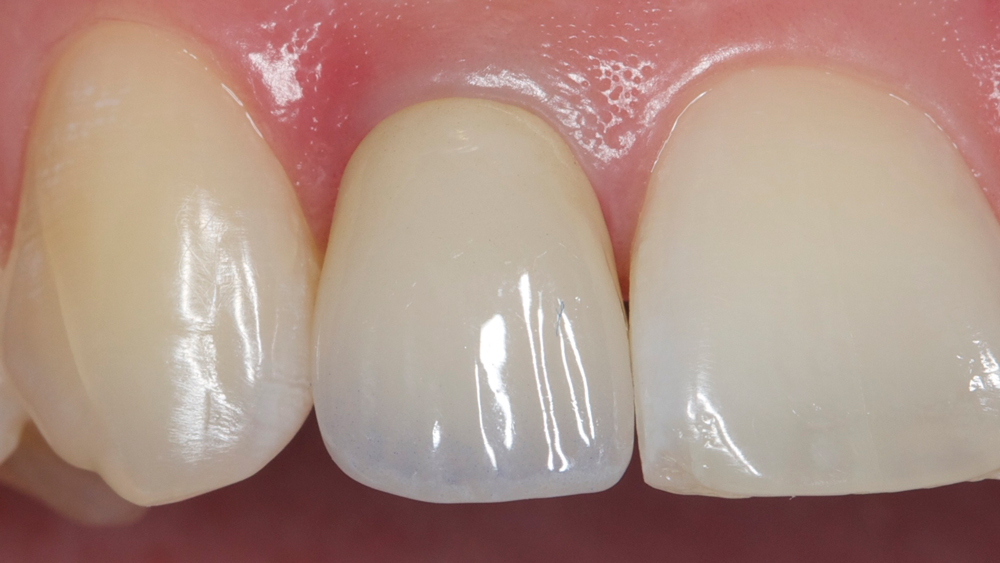
Figure 6: Try-in of the Obsidian Fused to Metal crown.
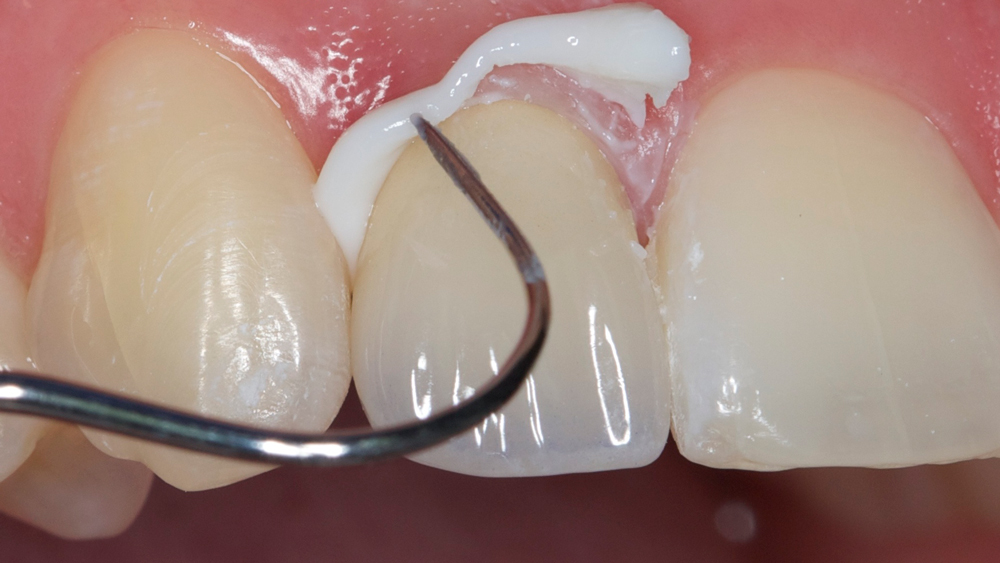
Figure 7: Excess cement was removed from the delivered restoration.
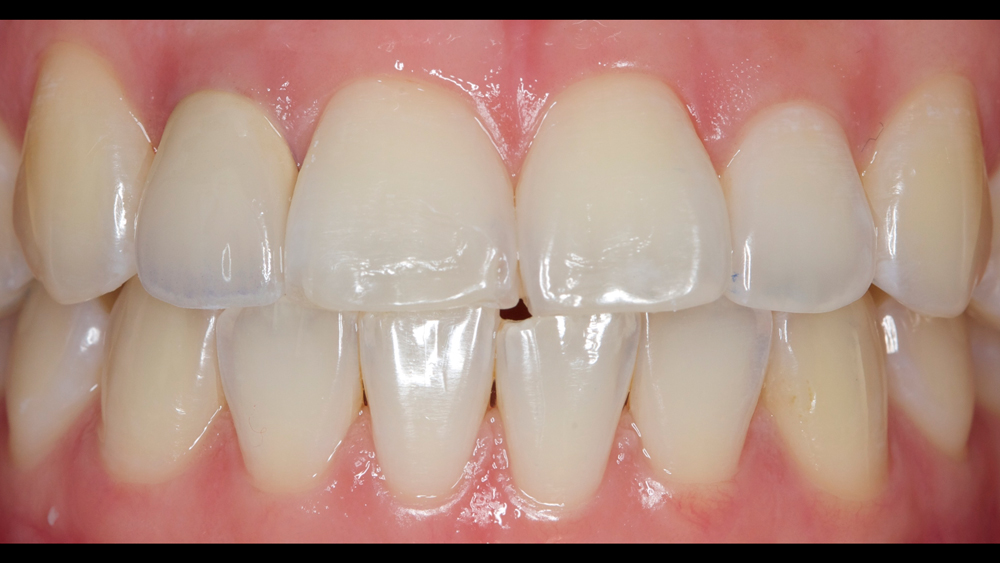
Figure 8: The final restoration approximately five minutes post-cementation.
Obsidian Fused to Metal restorations are an ideal choice when the underlying preparation prohibits the use of a high-esthetic all-ceramic, as well as in cases that require fracture-resistant durability.
Case 2: Three-Unit Posterior Mandibular Bridge
A female patient presented with a noble metal PFM bridge in the posterior with the ceramic fractured from the lingual of tooth #30 and a shade that did not blend with her opposing dentition (Figs. 9a, 9b). One of the major benefits of Obsidian Fused to Metal is that it can be used in cases such as this where monolithic zirconia is contraindicated because of inadequate vertical height for the inter-unit bridge connectors. In cases where those requirements are not met, Glidewell Laboratories has historically recommended traditional PFMs in lieu of BruxZir® Solid Zirconia. With the release of Obsidian Fused to Metal, there is now a new solution that is ideally suited.
One of the major benefits of Obsidian Fused to Metal is that it can be used in cases such as this where monolithic zirconia is contraindicated because of inadequate vertical height for the inter-unit bridge connectors.
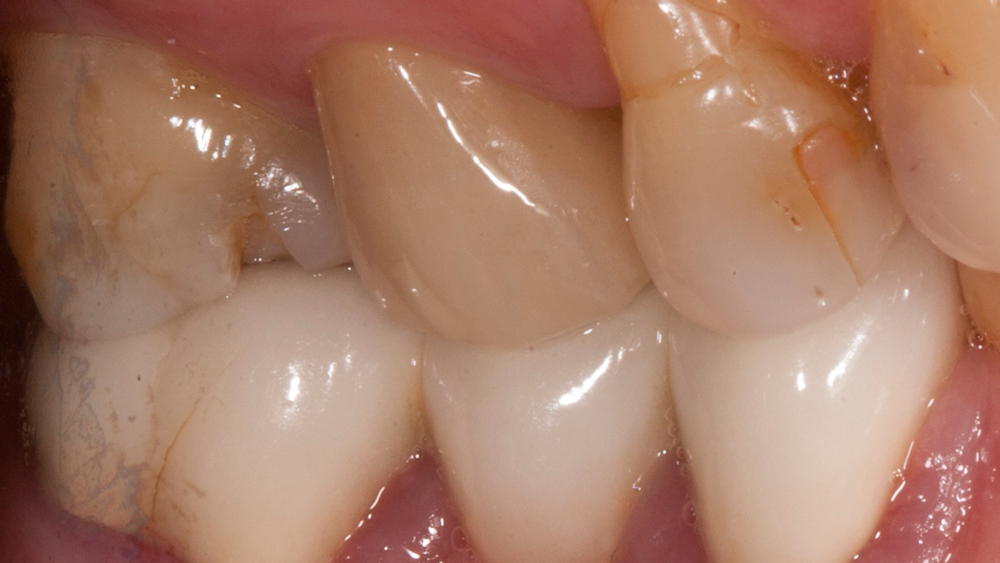
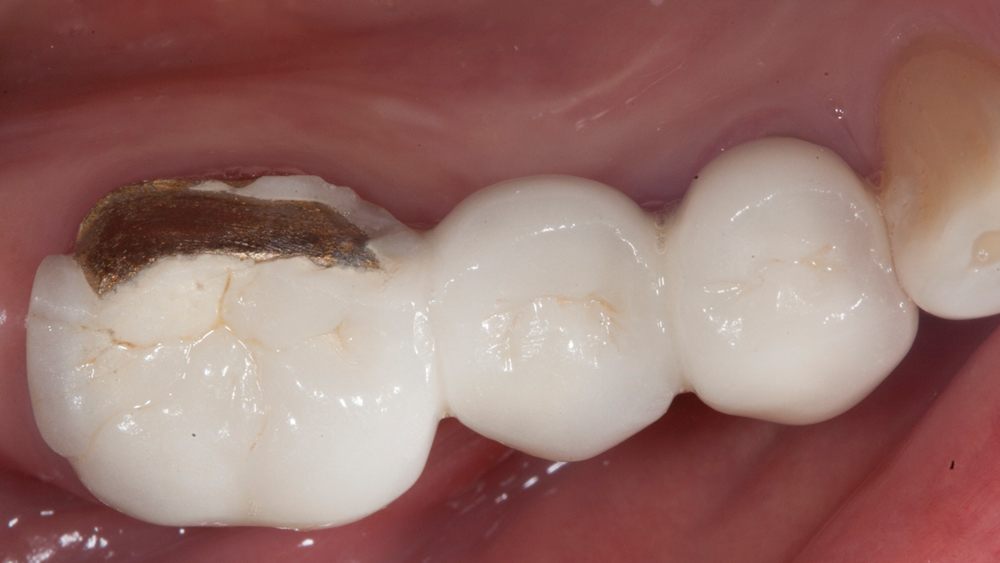
Figures 9a, 9b: The patient’s existing PFM bridge.
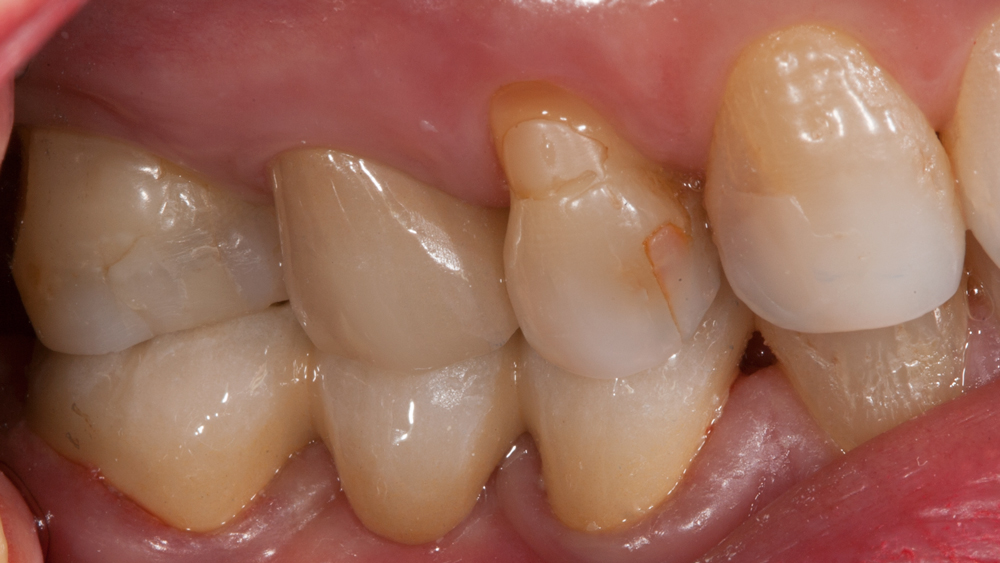
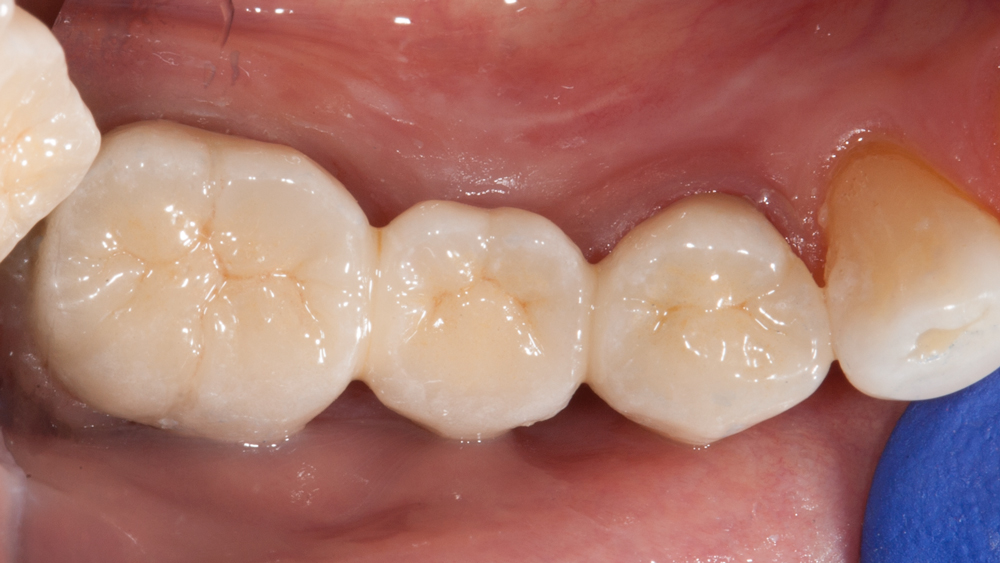
Figures 10a, 10b: The Obsidian Fused to Metal bridge in place.
The 3-unit Obsidian Fused to Metal bridge was successfully delivered to the patient (Figs. 10a, 10b), providing both a more natural-looking and substantially stronger restoration than her preexisting bridge. In similar cases that offer little room for occlusal reduction, Obsidian Fused to Metal is now the lab’s leading recommendation.
Case 3: Single-Unit Posterior First Molar
A male patient presented with a fractured ceramic restoration on tooth #14 (Fig. 11).
For this case, an Obsidian Fused to Metal crown was delivered because it could satisfy both the esthetic and functional requirements (Fig. 12).

Figure 11: The existing, fractured restoration on tooth #14.
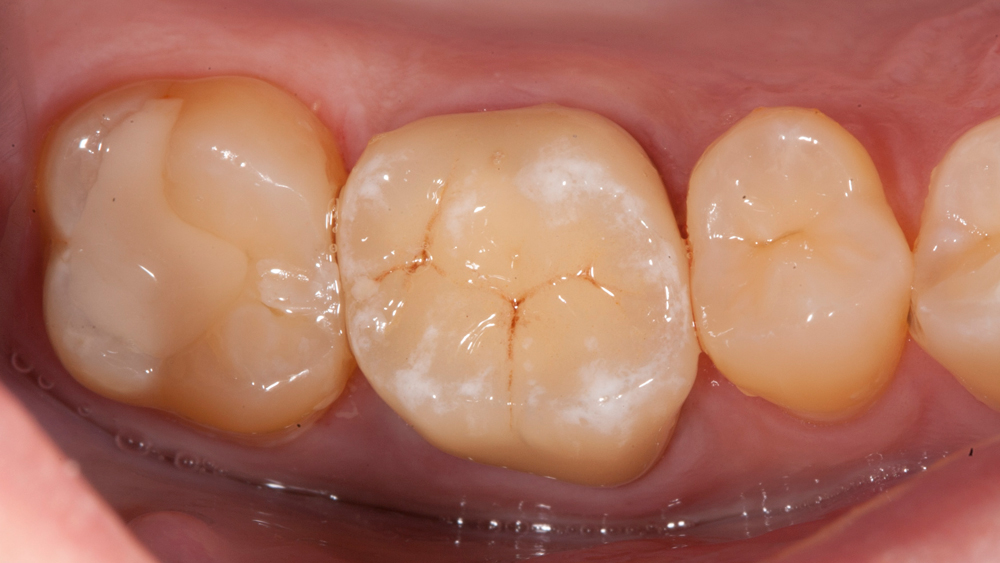
Figure 12: The delivered Obsidian Fused to Metal crown.
Obsidian Fused to Metal crowns and bridges enable clinicians to upgrade from feldspathic porcelain PFMs in cases where modern lithium disilicate and zirconia all-ceramics are contraindicated.
Conclusion
Obsidian Fused to Metal crowns and bridges enable clinicians to upgrade from feldspathic porcelain PFMs in cases where modern lithium disilicate and zirconia all-ceramics are contraindicated. These three cases offer a snapshot of the material’s many possible indications, and we’re excited to see how clinicians adopt Obsidian Fused to Metal crowns and bridges into their own practices.

